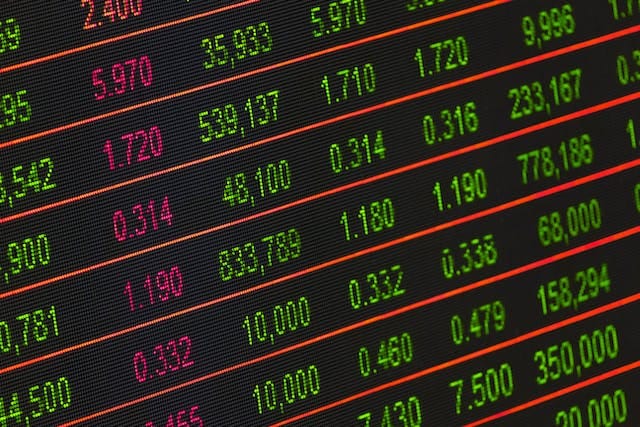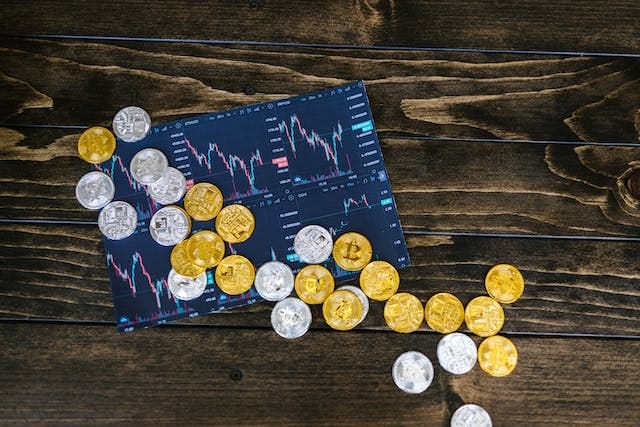Mastering the Markets: Exploring the Evolving Landscape of Forex Trading Trends
Delve into the evolving landscape of Forex trading trends to master the markets. Explore insights into dynamic shifts, emerging patterns, and strategies driving Forex trends.

Understanding Forex Trading
Forex trading, also known as foreign exchange trading, involves the buying and selling of currency pairs in the global marketplace. It is the largest and most liquid financial market in the world, with an average daily trading volume exceeding $6 trillion. The forex market operates 24 hours a day, five days a week, and provides ample opportunities for traders to profit from fluctuations in exchange rates. Understanding the basics of forex trading is essential for anyone looking to master the markets.
When delving into the world of forex trading, it's crucial to grasp the concept of currency pairs. Each pair represents the exchange rate between two currencies, such as the EUR/USD or GBP/JPY. Traders aim to predict the movement of these currency pairs, taking advantage of price fluctuations to generate profits. Additionally, understanding the factors that influence exchange rates, such as economic indicators, geopolitical events, and central bank policies, is fundamental to making informed trading decisions.
Risk management is another vital aspect of forex trading. Traders utilize various tools and techniques to mitigate potential losses, including stop-loss orders, position sizing, and diversification. Moreover, staying informed about global economic developments and market trends is essential for successful forex trading. By mastering the fundamental principles of forex trading, individuals can lay a solid foundation for navigating the dynamic landscape of the global currency market.

The Evolution of Forex Trading Trends
Over the years, the forex trading landscape has undergone significant evolution, driven by advancements in technology, changes in market dynamics, and shifts in regulatory frameworks. Traditional trading methods, such as phone-based transactions and manual order execution, have given way to electronic trading platforms and algorithmic trading systems. This transformation has democratized access to the forex market, allowing retail traders to participate alongside institutional investors.
The rise of high-frequency trading (HFT) and the proliferation of automated trading strategies have also reshaped the forex trading environment. These developments have led to increased market efficiency, rapid trade execution, and enhanced liquidity. Furthermore, the integration of artificial intelligence and machine learning algorithms has empowered traders to analyze vast amounts of data and identify trading opportunities with greater precision.
Another notable evolution in forex trading is the emergence of social trading platforms and copy trading services. These platforms enable traders to connect with peers, share insights, and replicate the trades of experienced investors. Additionally, the advent of mobile trading applications has revolutionized the accessibility of forex markets, allowing traders to monitor and execute trades on the go. As the forex trading landscape continues to evolve, staying abreast of these trends is essential for adapting to the changing dynamics of the market.
Factors Influencing Forex Trading Trends
The dynamics of forex trading trends are influenced by a myriad of factors, ranging from macroeconomic indicators to geopolitical events and market sentiment. Economic data releases, such as gross domestic product (GDP) reports, employment figures, and inflation rates, play a crucial role in shaping currency valuations. Traders closely monitor these indicators to gauge the health of national economies and anticipate potential shifts in monetary policies.
Geopolitical events, such as elections, trade negotiations, and geopolitical tensions, can also trigger significant volatility in the forex market. The outcome of these events often impacts investor confidence and the perceived risk associated with certain currencies. Moreover, market sentiment and risk appetite influence trading trends, as investors assess the relative strength of currencies and seek opportunities to capitalize on market movements.
Central bank policies and interest rate decisions are key drivers of forex trading trends. Monetary policy announcements, statements from central bank officials, and changes in interest rates can lead to swift and substantial movements in currency pairs. Additionally, unexpected developments, such as natural disasters or global health crises, can introduce uncertainty and volatility into the forex market. Understanding the interplay of these factors is essential for navigating forex trading trends with insight and agility.
Key Forex Trading Strategies
A diverse range of trading strategies is employed by forex traders to capitalize on market trends and achieve their financial objectives. Technical analysis, which involves the use of historical price charts and technical indicators, is a popular approach for identifying entry and exit points. Traders utilize tools such as moving averages, oscillators, and Fibonacci retracements to analyze price patterns and forecast future price movements.
Fundamental analysis is another critical strategy in forex trading, focusing on the evaluation of economic indicators, central bank policies, and geopolitical developments. By assessing the underlying factors driving currency valuations, traders can make informed decisions about their trading positions. Furthermore, sentiment analysis, which involves gauging market sentiment and positioning, provides valuable insights into the collective behavior of market participants.
Risk management strategies, such as setting stop-loss orders, implementing trailing stops, and diversifying portfolios, are integral to mitigating potential losses and preserving capital. Additionally, trend-following strategies, range trading techniques, and breakout strategies are utilized by traders to capitalize on different market conditions. By combining these strategies and adapting them to changing market dynamics, traders can optimize their approach to forex trading and enhance their prospects for success.
Emerging Technologies in Forex Trading
The integration of cutting-edge technologies has revolutionized the landscape of forex trading, empowering traders with advanced tools and capabilities. Algorithmic trading, also known as automated trading, leverages computer algorithms to execute trades at high speed and frequency. These algorithms are designed to analyze market data, identify trading opportunities, and execute orders with precision, enabling traders to capitalize on fleeting market inefficiencies.

The application of artificial intelligence (AI) and machine learning algorithms has enhanced the predictive capabilities of forex trading systems. AI-powered trading models can process vast amounts of data, recognize complex patterns, and adapt to evolving market conditions. Machine learning algorithms enable traders to develop predictive models, optimize trading strategies, and automate decision-making processes based on historical and real-time market data.
Blockchain technology has also made inroads into the forex trading landscape, offering transparent and secure transaction processing through distributed ledger systems. Cryptocurrencies, which are powered by blockchain technology, have introduced new avenues for trading and investment within the forex market. Furthermore, the use of application programming interfaces (APIs) and trading algorithms has facilitated seamless integration with liquidity providers and trading platforms, enabling efficient trade execution and connectivity.
Adapting to Changing Forex Trading Trends
In a dynamic and rapidly evolving market environment, the ability to adapt to changing forex trading trends is paramount for traders seeking sustained success. Staying informed about global economic developments, geopolitical events, and central bank policies is essential for anticipating market movements and adjusting trading strategies accordingly. By maintaining a flexible and proactive approach, traders can capitalize on emerging opportunities and navigate market fluctuations with agility.
Continuous learning and skill development are integral to adapting to evolving forex trading trends. Traders can enhance their proficiency by staying abreast of industry developments, participating in educational programs, and engaging with experienced professionals. Furthermore, leveraging the insights and perspectives of fellow traders through social trading platforms and online communities can provide valuable perspectives and enrich one's trading strategy.
Remaining adaptable in the face of technological advancements is also crucial for thriving in the forex trading landscape. Embracing new trading technologies, staying abreast of algorithmic advancements, and harnessing the power of data analytics can provide a competitive edge in the market. By remaining open to innovation and actively seeking to expand their skill set, traders can position themselves to thrive in the ever-changing terrain of forex trading.
Leveraging Data and Analytics in Forex Trading
Data and analytics play a pivotal role in informing trading decisions and uncovering actionable insights within the forex market. Traders utilize historical price data, economic indicators, and market sentiment metrics to conduct comprehensive analyses and identify potential trading opportunities. By leveraging statistical models, quantitative analysis, and data visualization techniques, traders can gain a deeper understanding of market dynamics and make informed trading decisions.
The integration of data-driven strategies, such as quantitative trading models and algorithmic approaches, enables traders to capitalize on statistical patterns and market inefficiencies. By harnessing the power of big data and machine learning algorithms, traders can develop predictive models, optimize trading strategies, and automate decision-making processes based on historical and real-time market data. Additionally, the use of data analytics tools and platforms empowers traders to conduct in-depth market research, identify trends, and assess the impact of economic events on currency valuations.
Incorporating risk management techniques based on data analysis is vital for preserving capital and mitigating potential losses. Traders can utilize statistical measures, such as value at risk (VaR) and Monte Carlo simulations, to assess the potential impact of market fluctuations on their portfolios. Furthermore, the application of sentiment analysis tools and sentiment-based trading strategies enables traders to gauge market sentiment and make informed decisions based on the collective behavior of market participants.
The Role of Psychology in Forex Trading
The psychological aspect of forex trading plays a significant role in shaping traders' decision-making processes, risk management strategies, and overall trading performance. Emotions such as fear, greed, and overconfidence can influence trading outcomes, leading to impulsive decisions and irrational behavior. Developing emotional discipline, maintaining a rational mindset, and adhering to a well-defined trading plan are essential for cultivating a resilient psychological framework in forex trading.
Managing emotions and psychological biases is critical for maintaining a balanced and objective approach to trading. Traders can employ techniques such as mindfulness, visualization, and cognitive reframing to mitigate the impact of emotional fluctuations on their trading decisions. Establishing clear risk management guidelines and adhering to predetermined trading rules can help mitigate the influence of impulsive emotions and foster a disciplined trading mindset.
Moreover, maintaining a healthy work-life balance and managing stress levels are integral to sustaining psychological well-being in forex trading. Traders can benefit from engaging in physical activities, pursuing hobbies, and seeking support from peers and mentors to alleviate stress and maintain a positive mindset. Additionally, cultivating a growth-oriented mindset, embracing resilience, and learning from both successes and setbacks are essential for fostering psychological fortitude in the challenging terrain of forex trading.
Forex Trading Education and Resources
Access to comprehensive education and resources is essential for aspiring forex traders to develop the knowledge, skills, and insights necessary for success in the market. Educational platforms, online courses, and interactive tutorials provide valuable learning opportunities, covering topics such as technical analysis, fundamental analysis, risk management, and trading psychology. By investing in continuous learning and skill development, traders can enhance their proficiency and adapt to the evolving landscape of forex trading.
Furthermore, leveraging the insights and perspectives of experienced professionals through mentorship, coaching, and networking opportunities can provide invaluable guidance and support. Engaging with industry experts, participating in trading communities, and seeking mentorship from seasoned traders can offer practical insights and enrich one's understanding of forex trading. Additionally, accessing reputable research reports, market analyses, and expert commentary can help traders stay informed about market developments and emerging trends.
Utilizing demo accounts and paper trading platforms is an effective way for novice traders to gain practical experience and test trading strategies without risking real capital. These simulated environments offer a risk-free opportunity to hone trading skills, familiarize oneself with trading platforms, and gain confidence in executing trades. Moreover, leveraging the resources provided by reputable forex brokers, such as educational webinars, market insights, and analytical tools, can further enrich traders' knowledge and empower them to make informed trading decisions.
Conclusion
Mastering the ever-evolving landscape of forex trading trends requires a multifaceted approach that encompasses fundamental understanding, adaptability, technological acumen, data-driven insights, psychological resilience, and continuous education. By comprehensively grasping the dynamics of forex trading, staying abreast of market trends, leveraging advanced technologies, and nurturing a disciplined mindset, traders can position themselves to thrive in the dynamic and competitive world of forex trading. Embracing innovation, seeking continuous learning opportunities, and engaging with the broader trading community are fundamental pillars for navigating the complexities of forex trading and realizing long-term success in the global currency markets.
CTA: As you embark on your forex trading journey, remember that mastering the markets is a continuous process. Stay informed, adapt to emerging trends, and prioritize your ongoing education to maximize your potential in the dynamic world of forex trading. Happy trading!




